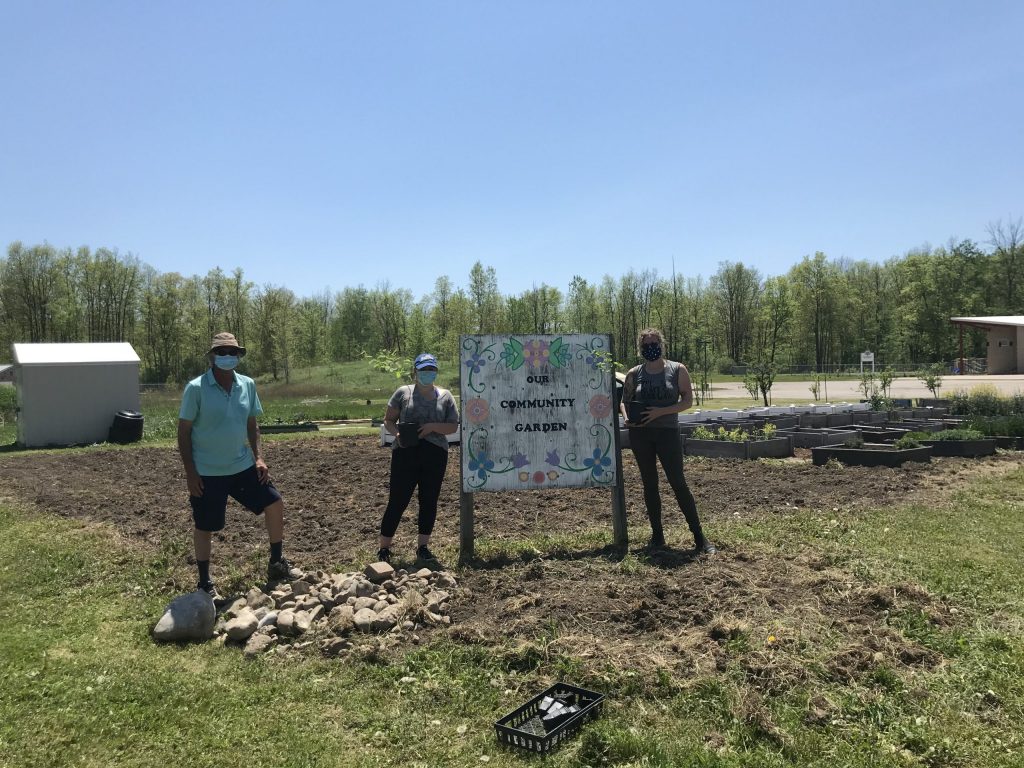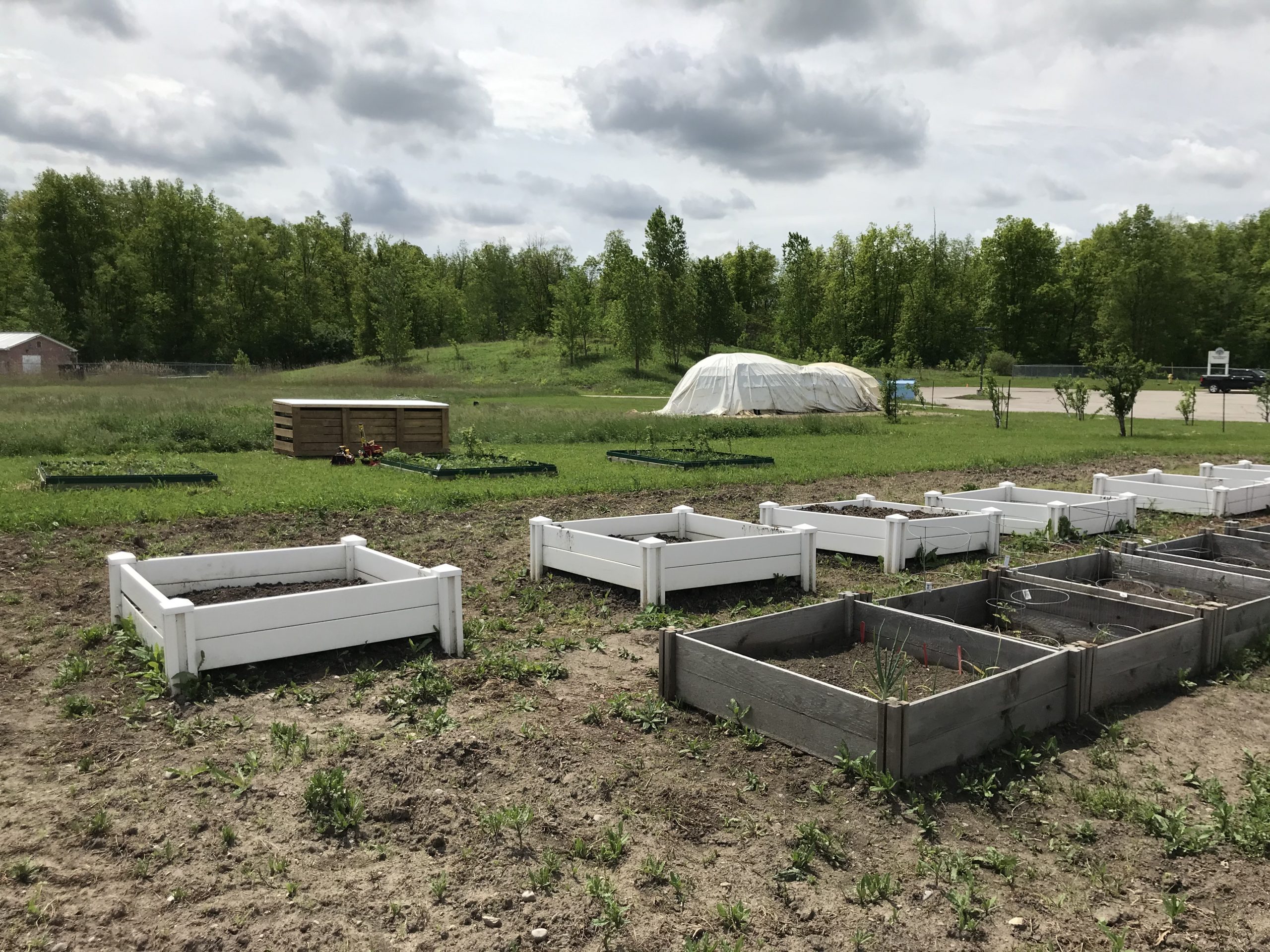
The people at Chippewas of the Thames First Nation are working hard in the area of food sovereignty and have initiated several projects to initiate community involvement towards their goals. They have programs in place to encourage participation in community gardening, including having members grow one species of plant in their garden that will be shared with the community at harvest time. Additionally, they are planning on designing contests for gardens that promote Anishinaabemowin and heritage. To support their gardening programs they identified the need for a larger composting unit within their community garden and partnered with other leaders in the community to bring this project to life. They recognized that community composting can enhance social inclusion, assist in supporting greener neighborhoods, improve local soils, enhance food security, and reduce truck traffic and emissions from hauling garbage to landfills.
Green Economy London and the London Environmental Network partnered with them on this project to identify other collaborators to support the project and assist with the building of the community composting system.
The project included the following:
- Planting 12 fruit trees donated from ReForest London
- Distributing 14 backyard composters donated by the City of London along with educational materials.
- Building a 10′ x 4′, three tier community composting unit with removable slats. The community composting unit is located in the community garden within access of several buildings within the community including the school, firehall, health centre, and band office. Therefore it has the potential to divert waste from these buildings and can be used to educate students on how to compost.

The average amount of carbon sequestered in the first 10 years of a tree’s life is approximately 5.9kg/year. Therefore the 12 new trees have the potential to sequester 71kg of carbon in their first year. After 10 years trees can absorb an average of 22kg/year! Plus they will also be able to provide fruit to the local residents.
Each backyard composter and digester has the potential to divert 40% of each families’ waste from the landfill. The average Canadian household produces 1,629kg of waste per year. Therefore, if the composters are regularly utilized, there is a potential for each household to divert approximately 650kg of organic waste from landfills. With 14 new composters, together that would be equivalent to over 9 tonnes of organic waste diverted each year!
According to the EPA’s Waste Reduction Model calculation, 0.8808 tonnes of GHG emissions is equivalent to 1 tonne of organic waste. Therefore, this project has the potential to prevent 7.9 tonnes/year of CO₂equivalent that would have been released into the atmosphere had it gone to landfill.
Organic waste can have huge impacts on the life of the local landfill, land-use planning, and contamination of groundwater. A conscious effort to reduce the amount of waste that ends up in a landfill can increase its lifespan, thereby reducing the need for new landfills and allowing the community to devote their resources elsewhere.
Composting is the process of naturally breaking down organic materials into its soil-like form, called humus. The humus can be used as a fertilizer for the community garden, where the large composting unit was built, as well as in backyard gardens. This organic compost is the prefect alternative to processed fertilizer, and feeds back the carbon inputs through a continuous loop within the community garden/compost system.
This project was made possible by the following sponsors and collaborators:
- Chippewas of the Thames First Nations
- Green Economy London
- The London Environmental Network
- The City of London
- ReForest London
- Carrot Cache
- EnviroStewards
- Convertus




